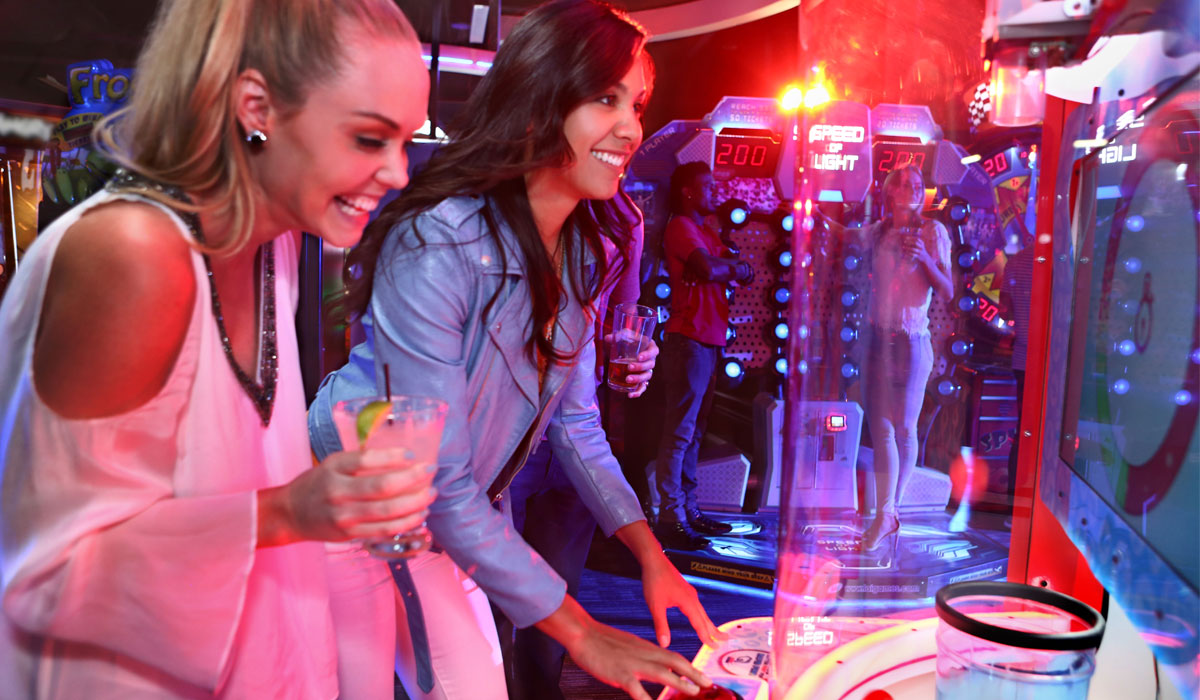CEO Chris Morris revealed Tuesday that Dave & Buster’s has a long-term plan to “further cement our company as the undeniable leader in location-based entertainment.” But investors and other stakeholders will have to wait until the company’s Investor Day on May 16 to get the full scope.
“Our approach is to provide reasonable guardrails for what we’re going to call a near-term, long-term kind of view of the company,” Morris said during the company’s Q4 earnings call. “What we really want to be accomplishing with Investor Day is to really lay out the strategy and how we view the company on a longer-term basis. And we realize that I know you guys all have models, you all are desperately looking for a specific data point, but the reality of it is we have a great business that has some near-term opportunities in front of us that we are executing against. And we feel like there’s tremendous opportunity on the upside on a mid- to longer-term basis and that’s what we want to be able to highlight for you guys.”
Morris did give hints on what Dave & Buster’s and Main Event will speak about. One of the bigger strategies is to unlock a new hospitality model. The CEO noted that both concepts have large assets—30,000 to 50,000 square feet—and receive a considerable amount of volume in short periods. So the companies have challenged themselves to create an environment where they’re able to manage guest flow as efficiently as possible and also cater to the customer with every step. Morris said brands will work with operators and the head of technology to develop proprietary tools to stay engaged with consumers.
The process started at Main Event and is carrying over to Dave & Buster’s, Morris explained. He believes the changes—staged year by year—will lead to more loyalty, frequency, and a better experience.
“It’s that intersection of the human service model and the technology model where we’re maniacally focused on enabling the hospitality experience,” Morris said. “And so we think that there’s just tremendous upside as we develop this. And we’re able to stay more engaged with the guests throughout every step of that journey, then that gives us the advantage of being able to collect a tremendous amount of data on those particular guests to be able to tailorize our service approach just to meet their specific needs.”
READ MORE:
Dave & Buster’s Heads Toward ‘Refined Brand Positioning’
Meet Dave & Buster’s New, Futuristic Revenue Stream
Dave & Buster’s and Main Event’s Synergy is Ahead of Schedule
Stores are removing complexity in operations, mostly in the back of house. The goal is to have “the right people in the right place at the right time” during peak weekend hours. Both companies are working to develop the right staffing model, reporting tools, and management approach to maximize throughput. Additionally, Dave & Buster’s is developing in-shift reporting and server scorecards to provide operators with information to make real-time adjustments and coaching throughout a shift.
“These tools are just the beginning of the changes we will be making over the long run to unlock a new hospitality model for our business,” Morris said. “Our commitment to the guest experience and unwavering focus on supporting our operators will be one of our greatest competitive advantages as we grow this business into the future.”
Other key strategic points of Dave & Buster’s long-term plan are: drive brand relevancy, implement guest-facing technology, launch “bleed-through” innovation, fire up remodels and a new image, and roll out global expansion efforts.
Systemwide same-store sales increased 19 percent in Q4 year-over-year and 14.1 percent against 2019. Store operating margins were 30 percent in Q4, a 50-basis-point improvement from 2021 and a 230-basis-point rise from 2019. Morris attributed these trends to thoughtful pricing and increased operating efficiencies.
The special event business was down 6.4 percent versus Q4 2019, compared to a decline of 6.7 percent in Q3 and a drop of 13.4 percent in Q2. Dave & Buster’s expects special event comps to turn positive in fiscal 2023. Food and beverage mixed 36.1 percent in the quarter versus 34.1 percent last year, partially due to the rise in special events, which involve more food and beverage as opposed to amusement.
The quarter started slow because of calendar shifts but picked up momentum into January and February. As the brand heads into April, the CEO said “there’s just a lot of noise in the numbers early into Q1.” He added that a combination of calendar mismatches and lapping omicron has created “a lot of volatilities in the numbers week to week.”
“We’ve looked at our sales figures to try to understand if there’s anything more than just timing of spring breaks and lapping a difficult comparison,” Morris said. “We’re not seeing anything that would suggest that there’s a significant change in the fundamentals of this business. And so our best guess is where things are going to play out is, we think that when we get through this tough comparison that the business is going to continue to perform nicely in the near-term and over the long-term.”
The company recorded $564 million in Q4 revenue and $138 million in adjusted EBITDA—both records thanks to the addition of Main Event. The company produced a 24.5 percent adjusted EBITDA margin in Q4, which is a 300-basis-point increase from 2019. For the full fiscal 2022, the brand reported revenue of $2 billion, an increase of 50.6 percent year-over-year and a bump of 45 percent compared to 2019. Dave & Buster’s also achieved its annual synergy target of $25 million from the merger with Main Event, which was not only ahead of schedule but also $5 million more than originally planned.
Dave & Buster’s ended Q4 with 152 stores while Main Event operates 55. The plan is to open 16 stores in fiscal 2023, including 11 Dave & Buster’s and five Main Event locations.










